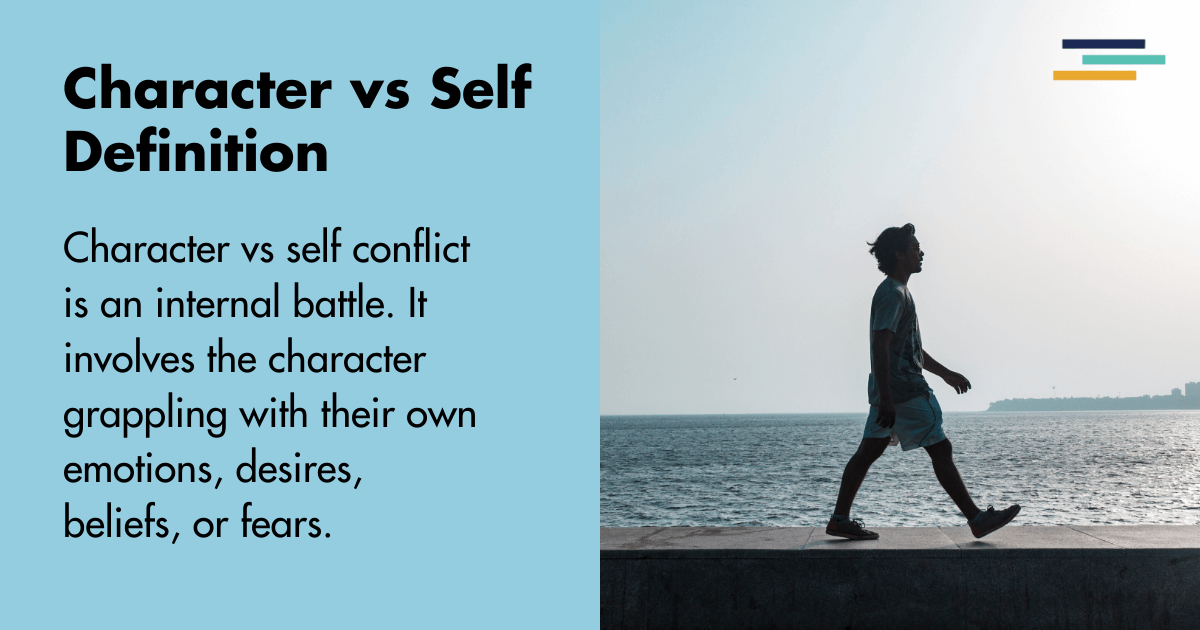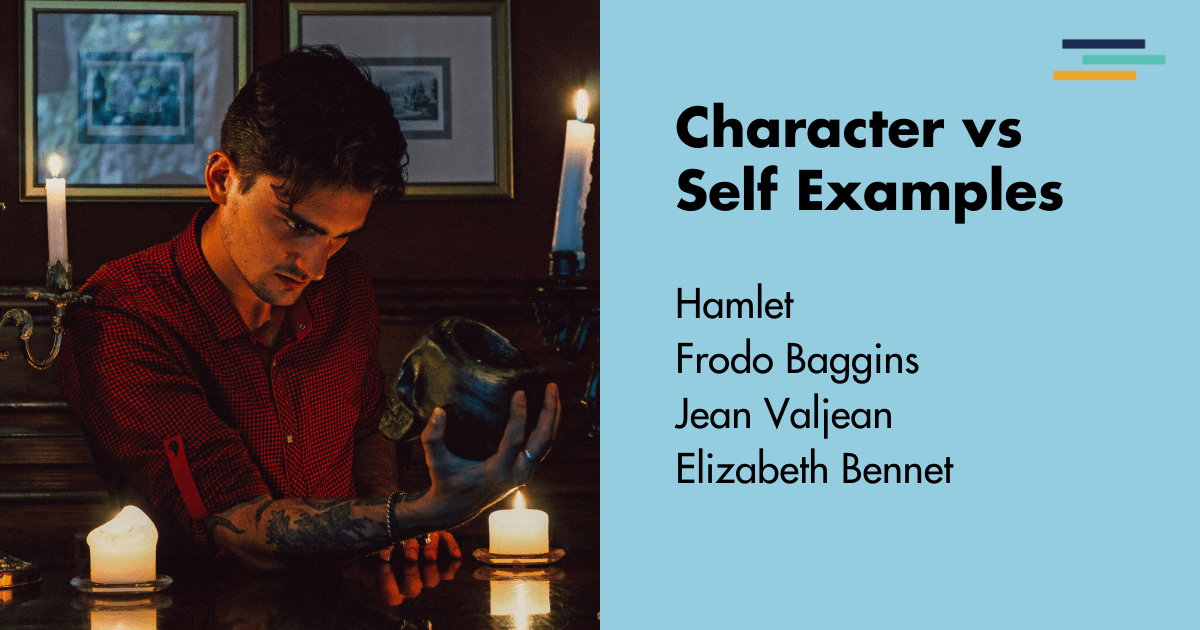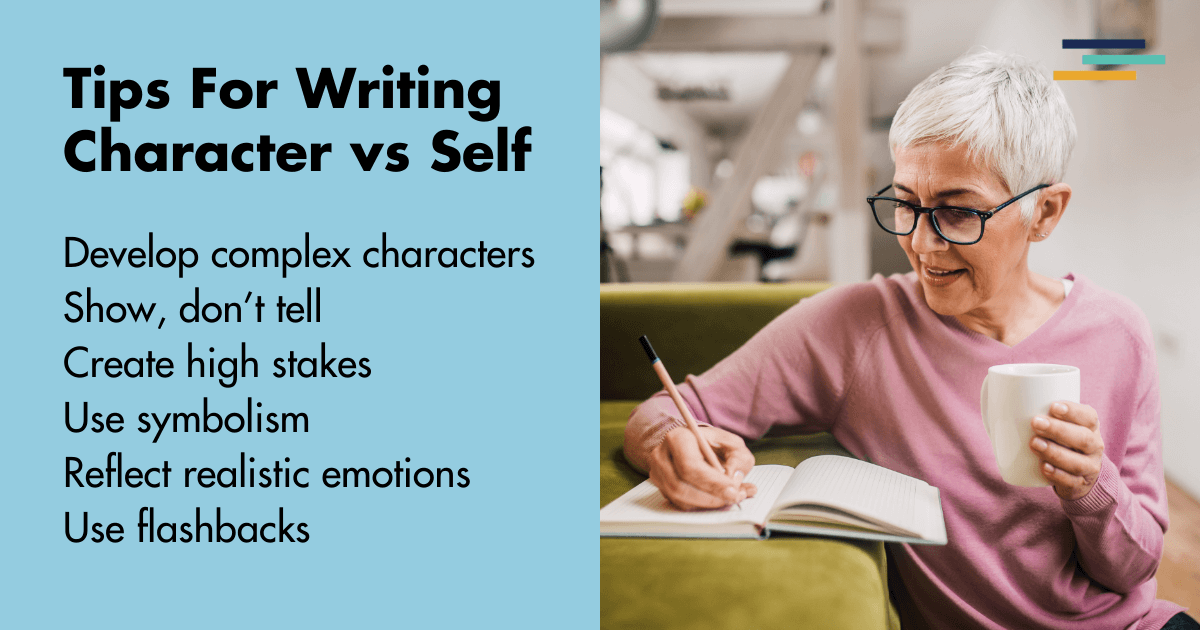
In the realm of storytelling, the conflict between a character and themselves, often referred to as “character vs self” or “man vs self,” delves into the internal struggles and psychological battles that define a character’s journey.
And let me tell you, my writerly friend, it’s that internal conflict that keeps readers turning pages and connects them to your wonderful characters.
This type of conflict is essential for character development, providing depth and complexity to the narrative.
What Is Character vs Self?
Character vs self conflict is an internal battle that takes place within a character. It involves the character grappling with their own emotions, desires, beliefs, or fears.
This conflict often revolves around making tough decisions, overcoming personal flaws, or dealing with internal crises. It is a powerful tool for revealing a character’s true nature and driving their growth throughout the story.
And character growth is super important if you want readers to love your characters.
The character vs self conflict is not about external forces but the internal forces within a character.
These forces can include fear, guilt, doubt, or even deeply ingrained beliefs that the character must confront and overcome. This struggle can manifest in various forms, such as a battle with addiction, a moral dilemma, or a crisis of faith.
By delving deep into a character’s psyche, writers can create an interesting and relatable narrative that resonates with readers on a personal level.

Character vs Self Examples
Hamlet in Hamlet by William Shakespeare
In Shakespeare’s tragedy, Hamlet’s internal struggle is the centerpiece of the play.
He wrestles with his conscience, contemplating revenge for his father’s murder while grappling with his own doubts and fears. Hamlet’s soliloquies, particularly, “To be or not to be,” epitomize his existential crisis and internal conflict.
Hamlet’s internal conflict is driven by his indecision and his contemplation of life and death.
His philosophical musings and moral dilemmas add depth to his character, making him one of the most complex and studied characters in literature. Hamlet’s internal struggle intensifies the play’s exploration of themes like revenge, mortality, and madness, making it a timeless masterpiece.
Frodo Baggins in The Lord of the Rings by J.R.R. Tolkien
Frodo’s journey to destroy the One Ring is fraught with internal conflict.
He battles the corrupting influence of the Ring and his own fears of failure. His inner struggle highlights the themes of sacrifice, courage, and the burden of responsibility.
Frodo’s internal conflict is not just about resisting the Ring’s power but also about the weight of his mission and the toll it takes on his spirit. His journey is as much about his internal battles as it is about the physical quest, illustrating the profound impact of internal conflict on a character’s development and the story’s progression.
Holden Caulfield in The Catcher in the Rye by J. D. Salinger
Holden Caulfield’s internal conflict centers on his alienation and search for identity.
He grapples with feelings of loneliness, depression, and confusion about adulthood. His inner turmoil drives the narrative, providing insight into his complex character.
Holden’s internal struggle is a poignant exploration of adolescence and mental health. His disdain for the adult world and his yearning for innocence create an interesting narrative of internal conflict.
Salinger’s portrayal of Holden’s inner life captures the angst and uncertainty of growing up, making The Catcher in the Rye a resonant and enduring novel.
Jean Valjean in Les Misérables by Victor Hugo
Jean Valjean’s internal conflict revolves around his struggle for redemption.
After being released from prison, he grapples with his past as a convict and his desire to lead a virtuous life. His moral dilemmas and the choices he makes are central to the narrative, showcasing his inner battles and transformation.
Many internal conflicts mark Valjean’s journey from a hardened criminal to a compassionate and selfless individual.
His encounters with kindness and his determination to do good, despite his past, highlight the powerful theme of redemption. Valjean’s internal struggles make him a profoundly human and relatable character.
Elizabeth Bennet in Pride and Prejudice by Jane Austen
Elizabeth Bennet’s internal conflict arises from her prejudices and her developing feelings towards Mr. Darcy.
She must confront her own biases and misconceptions to recognize her true feelings and find happiness.
This internal journey is a key element of the novel’s charm and depth.
Elizabeth’s initial judgments and her journey to self-awareness reflect the themes of pride and prejudice in the novel. Her internal conflict is intricately woven into her interactions with other characters, particularly Mr. Darcy, making her character growth and self-discovery central to the story’s resolution.

The Power of a Man versus Self Narrative
The man vs self narrative is a potent storytelling device because it taps into universal human experiences.
Readers can relate to characters facing internal battles, making the story more engaging and emotionally resonant. This type of conflict allows for deep character exploration, showcasing vulnerabilities, strengths, and growth.
Cool, or what?
Internal conflict is powerful because it mirrors real-life struggles.
Everyone has faced moments of doubt, fear, and indecision, making characters with internal conflicts more relatable and interesting. This narrative approach also allows for profound character development, as resolving internal conflicts often leads to significant growth and transformation.
The man vs self conflict also adds layers of complexity to a story. It can serve as a counterpoint to external conflicts, enriching the narrative and providing a deeper understanding of the character’s motivations and actions.
By delving into a character’s internal struggles, you can create stories that resonate on a deeper emotional level, leaving a lasting impact on readers.
Tips for Writing Character vs Self Conflict
Develop Deep, Complex Characters
To effectively portray internal conflict, your characters need to be well-developed and multi-dimensional.
Give them distinct personalities, backstories, and motivations. The more nuanced your characters, the more interesting their internal struggles will be.
Creating a detailed character profile can help you understand their fears, desires, and motivations. This depth will make their internal conflicts more believable and engaging. Consider their life experiences and how these shape their current struggles.
Complex characters with realistic internal conflicts are more likely to resonate with readers.
Show, Don’t Tell
Internal conflict is best conveyed through actions, dialogue, and internal monologue.
Show your characters wrestling with their thoughts and emotions. Use their behavior and decisions to illustrate their internal battles, rather than simply telling the reader what they are feeling.
Use subtle cues and body language to show a character’s internal struggle. Descriptive language can also evoke the emotional and psychological turmoil they are experiencing. Instead of stating that a character is anxious, describe their racing heart, sweaty palms, and hesitant actions.
This approach makes the conflict more vivid and relatable.
Create High Stakes
Internal conflict should have significant consequences for your characters.
Whether it’s a moral dilemma, a life-changing decision, or a personal flaw they must overcome, the stakes should be high enough to create tension and drive the narrative forward.
High stakes make internal conflicts more intense and interesting.
The potential consequences of a character’s decisions should be significant enough to create suspense and keep readers invested. This could involve risking relationships, careers, or even their sense of self.
High-stakes internal conflicts add drama and urgency to the story.
Use Symbolism and Metaphor
Symbolism and metaphor can add depth to internal conflict.
Objects, settings, or recurring motifs can symbolize your character’s inner struggles. For example, a character’s dilapidated house might represent their deteriorating mental state.
Symbolism can subtly reinforce a character’s internal conflict and add layers of meaning to the story.
Metaphors can illustrate complex emotions and psychological states, making them more tangible for readers. For instance, a stormy sea might symbolize a character’s internal conflict, reflecting their turbulent emotions and sense of being adrift.
Reflect Realistic Emotions
Internal conflict is most powerful when it reflects realistic emotions and experiences. Avoid clichéd or melodramatic portrayals.
Instead, draw on genuine human experiences to create authentic and relatable internal battles.
Authenticity in portraying emotions ensures readers connect with your characters on a deeper level. Avoid over-the-top reactions that may seem unrealistic. Instead, focus on subtle, nuanced portrayals of internal conflict that mirror real-life experiences.
This approach creates more believable and relatable characters.
Allow for Growth and Change
One of the key purposes of internal conflict is to facilitate character growth.
Show how your characters grow as they confront and overcome their internal struggles. This transformation adds depth to your story and provides a satisfying narrative arc.
Character growth resulting from internal conflict can be gradual or dramatic, depending on the story. Ensure that resolving internal conflicts leads to meaningful changes in the character’s behavior, beliefs, or relationships.
This growth should be a natural outcome of their struggles and experiences, adding depth and resonance to the narrative.
Balance Internal and External Conflict
While internal conflict is crucial, you must balance it with external conflict.
This creates a dynamic and engaging story. External challenges can exacerbate internal struggles, providing opportunities for your characters to confront their inner demons.
Balancing internal and external conflicts enriches the narrative and keeps it engaging.
External events can act as catalysts for internal struggles, forcing characters to confront their inner demons. This interplay between internal and external conflicts adds complexity and depth to the story, making it more immersive and interesting.

Use Flashbacks and Memories
Flashbacks and memories can be effective tools for exploring internal conflict.
They provide insight into a character’s past experiences and how these have shaped their present struggles. Use them sparingly to enhance, rather than overshadow, the main narrative.
Flashbacks and memories can reveal the roots of a character’s internal conflict, providing context and depth. However, they should be used judiciously to avoid disrupting the flow of the narrative.
Incorporate Internal Dialogue
Internal dialogue can be a powerful tool for revealing a character’s internal conflict.
By sharing a character’s thoughts and feelings directly with the reader, you can provide deeper insight into their internal struggles. This technique allows readers to experience the character’s turmoil firsthand.
Internal dialogue should reveal the character’s fears, doubts, and desires. It can highlight their internal debate and provide clarity on their motivations and decisions. By giving readers access to a character’s inner thoughts, you create a more intimate and engaging narrative.
Gradually Build the Conflict
Internal conflict should develop gradually, mirroring the character’s journey.
Start with subtle hints of the conflict and allow it to build. This gradual escalation keeps readers engaged and creates a more realistic and interesting narrative.
Gradual development of internal conflict can be achieved through small, revealing moments that build tension. As the story progresses, these moments should intensify, leading to a climax where the character must confront and resolve their internal struggle.
This approach creates a satisfying narrative arc and ensures that the internal conflict feels authentic and impactful.
And finally, always remember that story comes first. Focus on:
- Creating engaging characters
- Penning interesting plots
- Structuring solid settings
A tool like Fictionary helps you turn your draft into an interesting story readers love. So, with a strong narrative foundation, your writing can truly shine.


